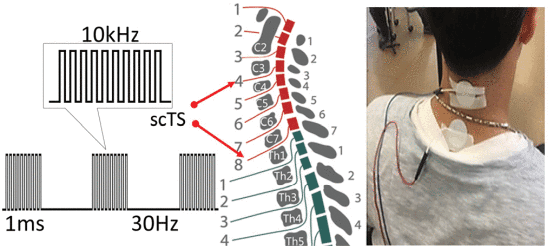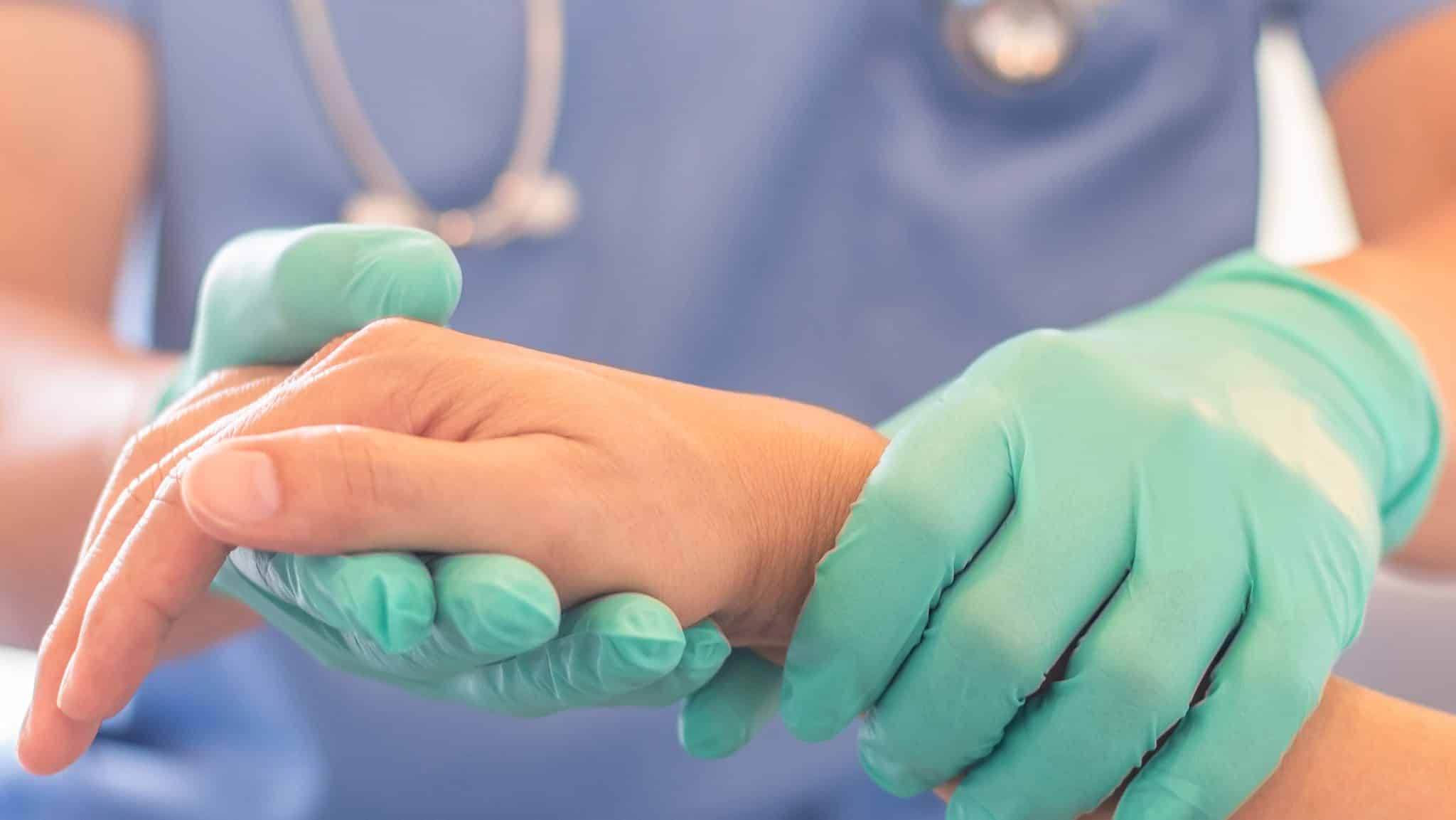The researchers of the Kessler Foundation confirmed that transcutaneous stimulation of the spinal cord results in results immediate and lasting in strength and grip, with positive effects evident even three months after the operation
East Hanover, NJ. March 22, 2021. Researchers at the Kessler Foundation have demonstrated fantastic results of transcutaneous spinal cord stimulation (scTS) combined with hand training.
Stimulation improves upper extremities and hand function in individuals with motor and sensory spinal cord injury (SCI).
Transcutaneous stimulation: the study

Photo by: Kessler Foundation / Jody Banks
The article on the results of transcutaneous stimulation was published in IEEE Transactions On Neural Systems And Rehabilitation Engineering. It is available here.
Because it is important
For people with quadriplegia, recovering hand and upper limb function is a top priority. It allows them to regain the ability to perform certain daily activities, and even a small degree of functional improvement can bring with it greater independence, greatly improving their quality of life.
Previous studies investigated whether transcutaneous stimulation was effective in improving upper limb and hand function in individuals with complete and incomplete motor cervical spinal injury.
“It wasn't clear,” he says Dr Zhang, author of the research at the Reynolds Center for Spinal Stimulation, “whether transcutaneous stimulation could facilitate functional restoration in an individual with complete motor and sensory quadriplegia.”
Previous studies reported no follow-up testing, leaving the question of whether scTS had long-term benefits open.

The results
In this case study, the researchers examined the short-term and three-month post-operative therapeutic effects of non-invasive transcutaneous stimulation in restoring upper limb and hand function in an individual with chronic complete cervical SCI.
The study participant, a 38-year-old man who suffered his accident 15 years prior to study participation, received 18 transcutaneous stimulation sessions combined with activity-specific manual training over the course of 8 weeks.
The results of this treatment revealed significant and long-lasting improvements in upper extremity and hand function.
How much is function improved with transcutaneous stimulation?
The total score of the graded redefined assessment of strength, sensitivity and grip has improved 72/232 at baseline to 96/232 at post-operative and scores maintained a range of 82/232 to 86/232 during the next three months.
Without any further treatment. Bilateral grip strength is also improved by 283,4% in the left hand, dominant and 30,7% in the right hand.
Furthermore, the changes showed an increase in the level of excitability of the spinal network.
This indicates that transcutaneous stimulation can potentially neuro-modulate the spinal network by restoring function in paralyzed limbs.


